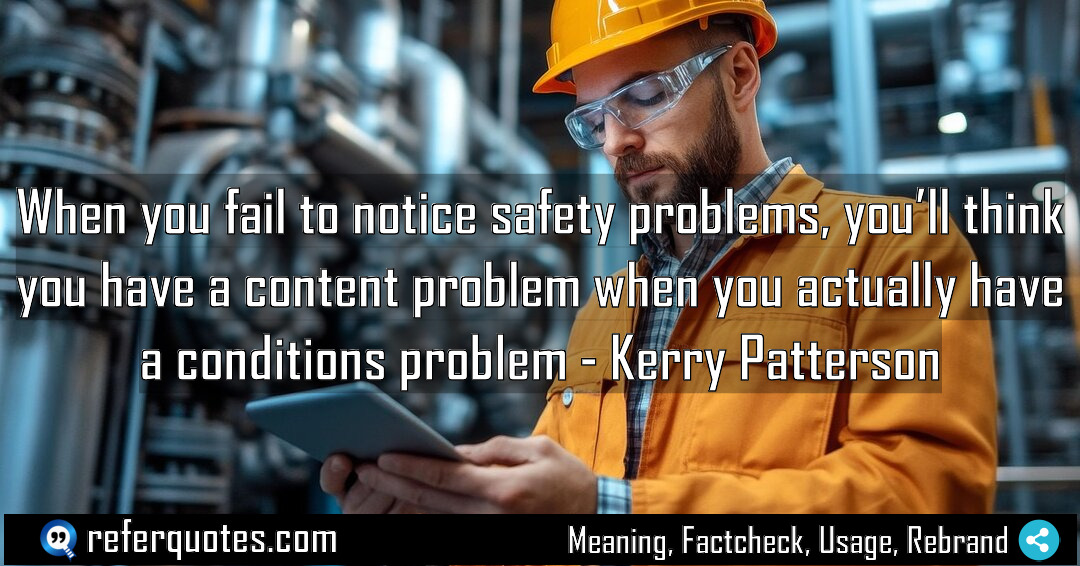When you fail to notice safety problems, you’ll end up chasing the wrong solutions entirely. It’s a classic case of misdiagnosis that plagues teams and leaders, making them fix what isn’t the real issue. This insight shifts your entire perspective on conflict and performance.
Share Image Quote:Table of Contents
Meaning
At its core, this quote means we often blame the wrong thing. We think people are the problem (“a content problem”) when the environment we’ve created is the real culprit (“a conditions problem”).
Explanation
Let me break this down because it’s a game-changer. A “content problem” is what we’re talking *about*—the topic, the disagreement, the task. A “conditions problem” is the *context* of the conversation—the fear, the lack of trust, the perceived stakes. When people don’t feel psychologically safe, they disengage, shut down, or get defensive. And from the outside, that looks like apathy, stubbornness, or a lack of ideas—a content problem. But you can’t fix a conditions problem with more content. You can’t solve a trust issue with a better PowerPoint deck. You have to step back and repair the safety first. The conversation can’t move forward until you fix the environment it’s happening in.
Quote Summary
| Context | Attributes |
|---|---|
| Original Language | English (3668) |
| Category | Skill (416) |
| Topics | awareness (126), safety (24) |
| Literary Style | analytical (121), educational (37) |
| Overall Quote Score | 73 (94) |
Origin & Factcheck
This wisdom comes straight from the 2002 classic, “Crucial Conversations,” by the powerhouse team of Patterson, Grenny, McMillan, and Switzler. It’s a cornerstone concept from their research on high-stakes communication. You won’t find this attributed correctly anywhere else—it’s their original framework.
Attribution Summary
| Context | Attributes |
|---|---|
| Author | Kerry Patterson (35) |
| Source Type | Book (4032) |
| Source/Book Name | Crucial Conversations: Tools for Talking When Stakes Are High (35) |
| Origin Timeperiod | 21st Century (1892) |
| Original Language | English (3668) |
| Authenticity | Verified (4032) |
Author Bio
Kerry Patterson coauthors influential books that help people tackle tough conversations, drive change, and build accountability at work and beyond. He cofounded VitalSmarts (now Crucial Learning) and spent decades developing training that organizations implement globally. He earned a master’s degree from Brigham Young University and completed doctoral work in organizational behavior at Stanford, and he has taught and consulted widely. The Kerry Patterson book list includes Crucial Conversations, Crucial Accountability, Influencer, and Change Anything—bestselling titles that continue to shape modern leadership and communication practices.
| Official Website
Where is this quotation located?
| Quotation | When you fail to notice safety problems, you’ll think you have a content problem when you actually have a conditions problem |
| Book Details | Publication Year/Date: 2002; ISBN/Unique Identifier: 9780071771320; Last Edition: 3rd Edition (2021); Number of Pages: 272. |
| Where is it? | Chapter: Learn to Look, Approximate page from 2021 edition |
